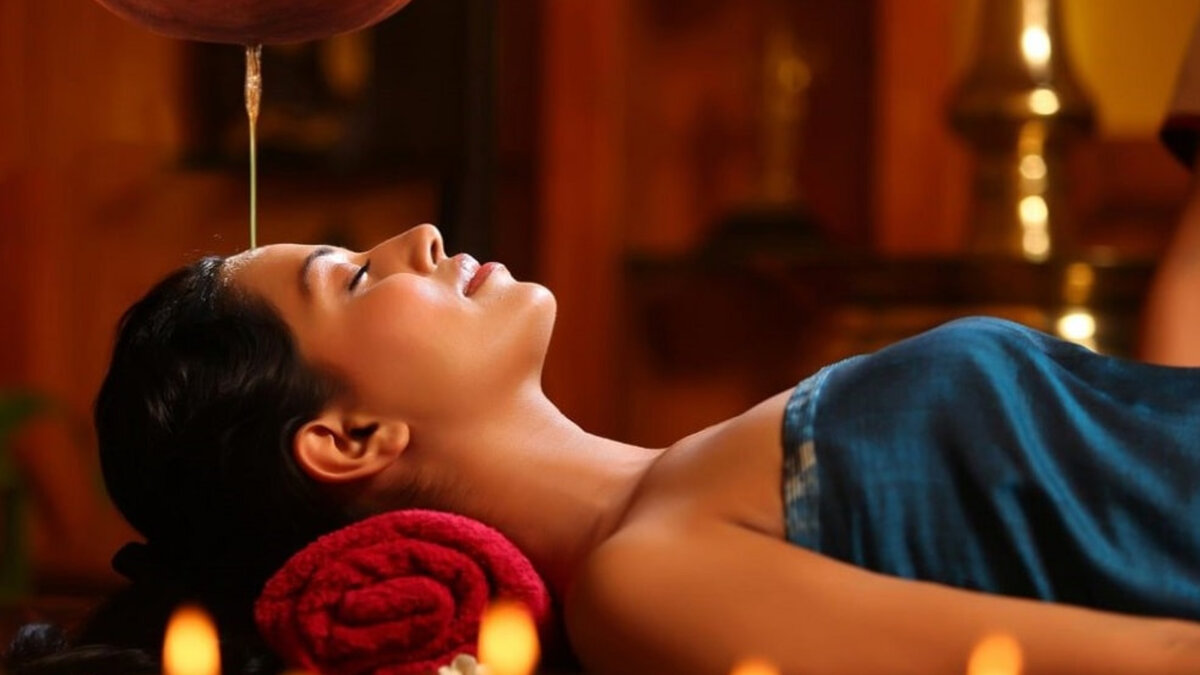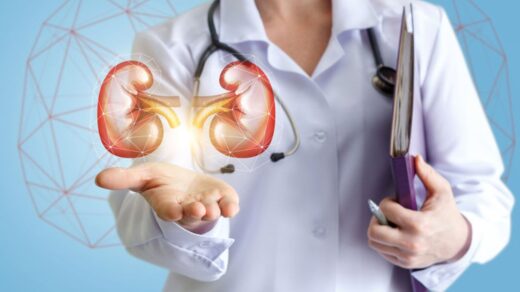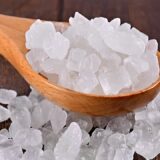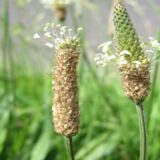Panchakarma: The Art of Cleansing, Rejuvenation, and Vitality
Panchakarma, an ancient Ayurvedic practice, has been gaining significant attention in the realm of holistic health and wellness. This comprehensive detoxification and rejuvenation therapy is rooted in the principles of Ayurveda, aiming to restore the balance of mind, body, and spirit.
Indian Ayurveda has contributed significantly to the world by introducing various innovations. These innovations have revolutionized people’s lifestyles, leading them from a world plagued by ailments to a state of robust well-being.
The importance of Ayurveda is profound, firmly establishing it as the forefront practice among alternative forms of medicine. Arguably, one of the most distinguished branches of Ayurveda is Panchakarma.
The term “Panchakarma” literally translates to “Five Actions,” a fitting name as this approach revolves around five fundamental actions that regulate the body: Vomiting, Purgation, Niruham, Anuvaasan, and Nasyam. In essence, the Panchakarma healing technique serves as a cornerstone for the majority of Ayurvedic practices.
The effectiveness of Panchakarma is heightened when combined with the application of medicated oils, which aid in expelling impurities from the human body. Panchakarma exemplifies the core principles of Ayurveda and lives up to its well-earned reputation.
What is Panchakarma?
Panchakarma, a Sanskrit term, translates to “five actions.” It is an intricate purification process designed to eliminate toxins and imbalances from the body, ultimately promoting holistic well-being.
Originating from the ancient Indian system of Ayurveda, Panchakarma is grounded in the belief that when the body’s doshas (energetic forces) are in equilibrium, one experiences optimal health.
The Five Stages of Panchakarma
1. Vamana (Emesis Therapy)
Vamana, the first stage of Panchakarma, encompasses a unique therapeutic approach known as emesis therapy. This process is designed to eliminate excess mucus and accumulated toxins that have taken residence in the upper respiratory and digestive tract.
By triggering controlled vomiting, Vamana effectively purges these unwanted substances from the body. In addition to its detoxification benefits, Vamana plays a pivotal role in harmonizing the Kapha dosha, one of the three fundamental energetic forces in Ayurveda.
This dosha is associated with qualities like heaviness, stability, and moisture. Imbalances in the Kapha dosha can lead to respiratory issues, allergies, and congestion. Through Vamana, these imbalances are addressed, offering relief to individuals grappling with various respiratory concerns.
2. Virechana (Purgation Therapy)
The second stage, Virechana, centers on the concept of purgation therapy. This method focuses on cleansing the small intestine and liver through controlled purging, aiming to pacify the Pitta dosha.
Pitta, another dosha, embodies qualities like heat, digestion, and metabolism. When this dosha becomes imbalanced, digestive issues, skin problems, and inflammation may arise.
Virechana employs carefully selected herbs and therapies to induce gentle purging, effectively expelling toxins from the body. By doing so, it promotes improved digestion, metabolism, and overall balance within the system.
This stage’s emphasis on the Pitta dosha contributes to enhanced well-being by addressing the root causes of digestive and metabolic disturbances.
3. Basti (Enema Therapy)
Basti, the third stage of Panchakarma, involves a distinctive therapy known as enema therapy. This stage revolves around the rectal administration of herbal enemas, targeting the colon’s purification and balancing the Vata dosha.
The Vata dosha embodies qualities such as movement, coldness, and dryness. Imbalances in Vata can result in digestive disorders, constipation, joint-related problems, and nervous system issues.
By utilizing herbal concoctions, Basti assists in removing accumulated waste and toxins from the colon. This process not only facilitates effective elimination but also helps restore the Vata dosha’s equilibrium.
Individuals suffering from constipation, irregular digestion, and other Vata-related conditions find relief through Basti, as it promotes smoother bowel movements, alleviating discomfort and improving overall gut health.
4. Nasya (Nasal Administration)
Nasya, the fourth stage of Panchakarma, revolves around nasal administration to purify and rejuvenate the head and neck region. This practice involves the strategic application of herbal oils or powders through the nasal passages.
The aim is to enhance the functions of sensory organs while alleviating stress and congestion. The nasal passages serve as direct pathways to the brain, and Nasya leverages this connection to promote mental clarity and sensory vitality.
The herbal substances used in Nasya therapy facilitate the removal of accumulated toxins, clearing the nasal passages and enhancing overall respiratory health.
By rejuvenating the head and neck, Nasya contributes to improved cognitive function, alleviation of headaches, and a sense of relaxation and well-being.
5. Raktamokshana (Bloodletting)
The final stage of Panchakarma, Raktamokshana, is a practice that involves the purification of blood. While this stage is rarely employed in modern Panchakarma, its significance in Ayurvedic traditions cannot be understated.
Raktamokshana aims to address certain skin conditions and disorders related to blood toxicity. Through carefully administered methods, Raktamokshana aims to remove impurities and excess toxins from the bloodstream.
This approach can lead to improved skin health and alleviate conditions arising from blood-related imbalances. It’s important to note that Raktamokshana is used selectively and with caution, under the guidance of experienced practitioners, due to its invasive nature.
Why Choose Panchakarma Therapy?
In today’s fast-paced world, the onslaught of stress, environmental pollutants, and unhealthy lifestyle choices can accumulate within our bodies, laying the foundation for a deteriorating state of health.
The solution lies in the ancient practice of Panchakarma, a transformative therapy that offers a profound reversal of this degenerative process. Panchakarma serves as a beacon of rejuvenation, effectively liberating the body from the burdensome load of accumulated toxins.
This therapy orchestrates a harmonious symphony of techniques, including massage, herbal saunas, tailored nutrition, gentle fasting, and colon treatments. Together, they collaborate to free the body from the shackles of toxicity, igniting a remarkable transformation in both the short and long term.
At its core, Panchakarma embodies the essence of holistic wellness. Through its carefully curated regimen, it not only cleanses the body but also revitalizes the mind and spirit, offering a comprehensive rejuvenation experience.
The Panchakarma Process
Embarking on your personal Panchakarma journey commences with a thorough evaluation conducted by an experienced Ayurvedic Physician. This initial step empowers the specialist to craft a customized therapeutic plan that aligns with your unique health needs and goals.
The beauty of Panchakarma lies in its individualized approach, ensuring that each treatment is precisely tailored to your specific constitution. As the Panchakarma sessions unfold, you’ll discover a holistic spectrum of interventions that extend beyond the treatment center.
A special Ayurvedic diet, thoughtfully infused with select medicinal herbs and essential oils, becomes an integral part of your routine. These nourishing elements work in harmony, kindling the vitality of your liver and digestive organs, a pivotal step in the detoxification process.
The Lasting Impact
The transformative power of Panchakarma extends beyond its immediate effects. Its impact lingers, leaving an indelible mark on your overall well-being.
By purging accumulated toxins and reinvigorating your body’s innate capacity for balance, Panchakarma not only rejuvenates but also strengthens your resilience against the challenges of modern living.
So, why should you undergo Panchakarma therapy? The answer lies in its ability to rewrite your health narrative. It offers you the opportunity to break free from the grip of toxicity, reclaim your vitality, and embark on a journey toward enduring wellness.
Panchakarma is not just a therapy; it’s a profound commitment to your health, a chance to thrive in a world where well-being is paramount.
Benefits of Panchakarma
Panchakarma, the ancient art of Ayurvedic detoxification and rejuvenation, is a treasure trove of benefits that extend far beyond its traditional roots.
This comprehensive therapy, rooted in holistic principles, offers a diverse range of advantages that can positively impact every facet of your well-being.
1. Enhanced Digestion and Metabolism
At the core of Panchakarma lies the transformative power to reawaken your body’s natural mechanisms. Through its meticulous techniques, it stimulates and harmonizes your digestive system, revitalizing your metabolism.
By eliminating accumulated toxins, your body can efficiently process nutrients, leading to improved digestion and the conversion of food into energy.
2. Stress Reduction and Improved Mental Well-Being
In a world brimming with pressures, Panchakarma stands as a sanctuary for mental respite. The therapy’s soothing methods, including specialized massages and herbal treatments, work harmoniously to alleviate stress and tension.
As toxins are liberated from your body, your mind follows suit, experiencing a newfound sense of tranquility and calmness.
3. Detoxification at a Cellular Level
Panchakarma’s prowess lies in its ability to delve deep, targeting toxins at a cellular level. By engaging in therapies that penetrate the innermost layers of your tissues, it facilitates a comprehensive detoxification process.
This intricate cleansing not only purifies your physical self but also provides a renewed sense of clarity and lightness.
4. Alleviation of Chronic Conditions
For those wrestling with chronic conditions, Panchakarma offers a ray of hope. Through its holistic approach, this therapy seeks to identify the root causes of ailments and address them at their source.
By freeing your body from accumulated impurities, it creates an environment conducive to healing, potentially alleviating the burden of chronic health challenges.
5. Rejuvenation of Skin and Tissues
The benefits of Panchakarma transcend the internal, extending to the very fabric of your being – your skin and tissues. By invigorating your body’s natural regenerative capacities, this therapy promotes skin health and tissue rejuvenation.
The radiance that emanates from within reflects not only the cleansing of toxins but also the revitalization of your overall appearance.
Who Can Benefit from Panchakarma?
Panchakarma, a holistic healing tradition rooted in Ayurveda, extends its embrace to a wide spectrum of individuals seeking equilibrium and vitality.
Its versatile nature makes it a valuable asset for those with specific health concerns as well as those aspiring for preventive care. Unveiling a realm of balance, Panchakarma welcomes all who seek the path to well-being.
1. Relief Seekers
For individuals grappling with specific health issues, Panchakarma emerges as a beacon of hope. Its intricate techniques target the underlying causes of ailments, offering the promise of relief.
Whether it’s digestive disturbances, chronic conditions, or skin ailments, Panchakarma’s comprehensive approach seeks to alleviate these burdens, guiding individuals toward a healthier existence.
2. Preventive Pioneers
Prevention is the cornerstone of enduring well-being, and Panchakarma recognizes its significance. Even in the absence of overt health concerns, embracing Panchakarma as a preventive measure can yield profound benefits.
By purging accumulated toxins and harmonizing the body’s doshas, Panchakarma creates an environment conducive to lasting health, reducing the risk of potential imbalances.
3. Dosha Dwellers
In the realm of Ayurveda, the doshas – Vata, Pitta, and Kapha – dictate our unique constitution and tendencies. Panchakarma excels in addressing doshic imbalances, making it particularly effective for those seeking to restore equilibrium.
Whether your dosha is out of sync due to lifestyle factors, stress, or environmental influences, Panchakarma’s personalized approach aims to recalibrate and realign.
4. A Path to Holistic Harmony
Panchakarma’s reach is expansive, encompassing individuals from all walks of life. Its ability to address a multitude of needs – from specific ailments to the pursuit of holistic well-being – underscores its universal applicability.
Through its transformative processes, Panchakarma beckons individuals to embark on a journey of rejuvenation, vitality, and inner harmony.
How Do You Feel After Panchakarma?
We can experience various Effects after Panchakarma treatments
- Lightness: A sense of physical lightness and freedom as accumulated toxins are released from the body.
- Clarity: Enhanced mental clarity and alertness, leading to improved focus and cognitive function.
- Vitality: Renewed energy and vitality, as the body’s systems function more efficiently.
- Relaxation: A profound sense of relaxation and reduced stress, attributed to the therapy’s soothing techniques.
- Improved Digestion: Noticeable improvement in digestion and metabolism, leading to better nutrient absorption.
- Radiance: Skin and complexion may brighten as the body’s inner health reflects on the outside.
- Reduced Ailments: Alleviation of chronic conditions and ailments, owing to the therapy’s detoxifying effects.
- Balanced Emotions: A more balanced emotional state, with reduced mood swings and heightened emotional well-being.
- Deep Rest: Improved quality of sleep and deep rest, contributing to overall rejuvenation.
- Harmony: Enhanced balance of the body’s doshas, promoting overall harmony and well-being.
In essence, the aftermath of Panchakarma is a tapestry of positive effects that collectively uplift the body, mind, and spirit, fostering a renewed sense of vitality and inner equilibrium.
Panchakarma Treatment Price
Panchakarma Treatment Cost in Indian Rupees:
- 7 Days: ₹ 2500X7=17500.00
- 14 Days: ₹ 2500X14=35000.00
- 21 Days: ₹ 2500X21=52500.00
- 28 Days: ₹ 2500X28=70000.00
Please note that the costs may vary based on factors such as the specific therapies included, the location of the treatment center, and any additional services provided. It’s recommended to inquire directly with the treatment center for accurate and up-to-date pricing information.
FAQs
1. Is Panchakarma suitable for everyone?
Panchakarma can be beneficial for many individuals, but it’s best to consult a qualified practitioner to determine its suitability for your specific needs.
2. Are the effects of Panchakarma immediate?
While some effects may be immediately noticeable, the full benefits of Panchakarma unfold gradually as the body continues to detoxify and rejuvenate.
3. How often should one undergo Panchakarma?
The frequency of Panchakarma treatments varies based on individual needs and imbalances. A practitioner can provide personalized recommendations.
4. Can Panchakarma be done at home?
Panchakarma involves specialized therapies that are best administered by trained professionals in a controlled environment.
5. What role does diet play during Panchakarma?
Diet plays a vital role before, during, and after Panchakarma. Following a nourishing and detoxifying diet enhances the effectiveness of the treatment.
Panchakarma, an ancient Ayurvedic tradition, offers a pathway to holistic wellness through its intricate stages and profound benefits. By eliminating toxins and restoring balance, Panchakarma empowers individuals to embrace vitality and lead healthier lives.
References:
- Ayurveda and Panchakarma: Measuring the Effects of a Holistic Health Intervention(1)
- Ayurveda panchakarma treatment success in a case of shotha-a case study(2)
- VARIOUS ASPECTS OF PANCHAKARMA IN AYURVEDA(3)
- Importance of Panchkarma in improving General Health(4)
- Panchakarma -A Scientific and Evidence Based Specialty Therapy of Ayurveda(5)

























